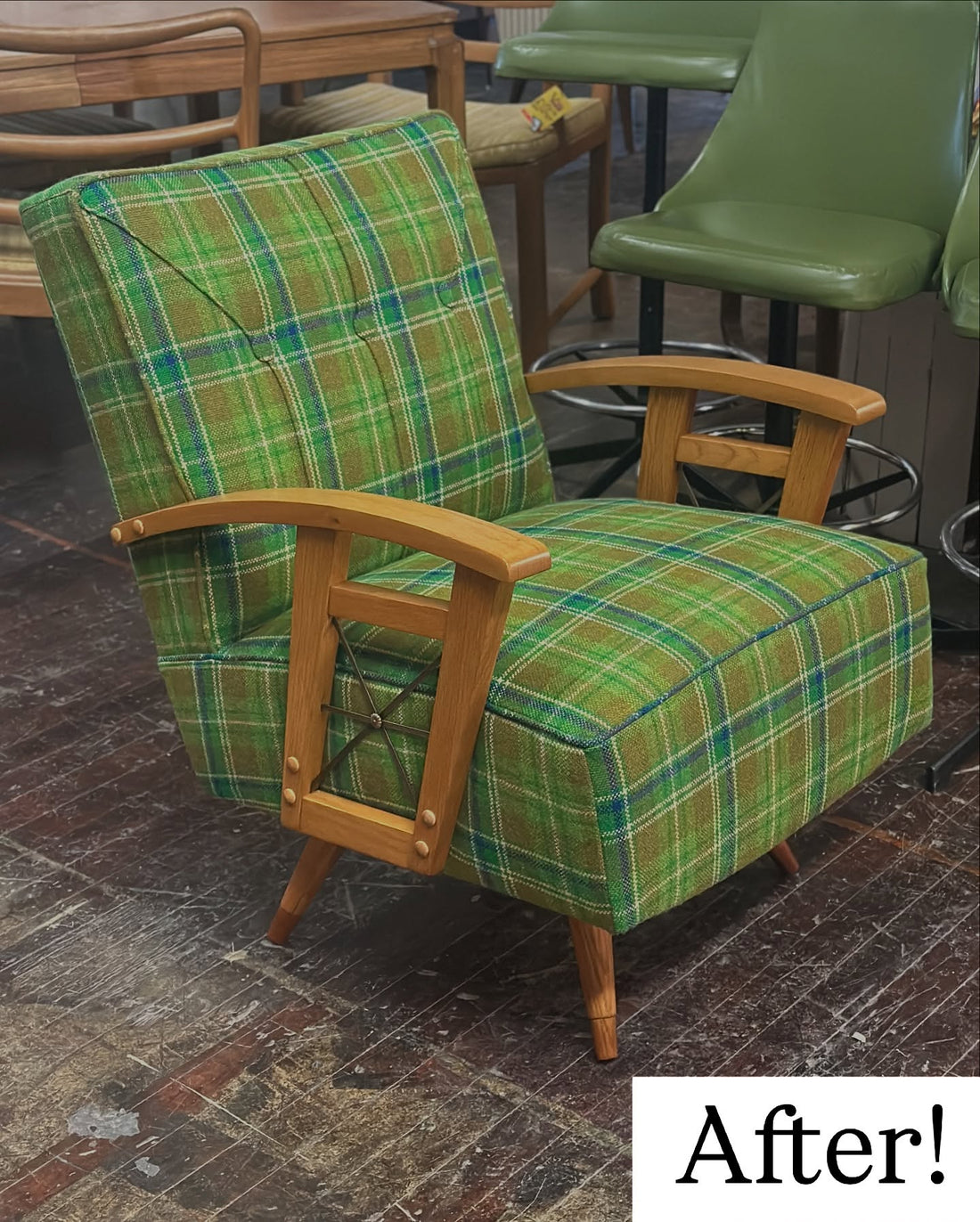
"Revive and Renew: The Ultimate Guide to Reupholstering Your Furniture"
Share
Revive and Renew: The Ultimate Guide to Furniture Reupholstery

Furniture reupholstery is a fantastic way to breathe new life into worn-out or outdated pieces without having to replace them. Whether you're looking to restore a cherished family heirloom, update your decor, or simply give your furniture a fresh look, reupholstering offers a sustainable and cost-effective solution. In this blog, we'll explore the reasons why reupholstering is a great option, the process involved, and how it can enhance your home’s style and comfort.
Why Choose Reupholstery?
-
Cost-Effective
Buying new furniture, especially high-quality or custom pieces, can be a significant investment. Reupholstering offers an affordable alternative. If you already have a well-made piece of furniture that has lost its luster due to worn-out fabric, stains, or outdated patterns, reupholstering can save you hundreds or even thousands of dollars compared to purchasing a new one. In many cases, reupholstering costs much less than replacing the entire piece, while still allowing you to enjoy the same level of quality and comfort. -
Sustainability
With growing concerns about waste and sustainability, reupholstering is an eco-friendly choice. Instead of discarding furniture that might still be in good structural condition, you can give it a second life. The process reduces the demand for new materials, lowers landfill waste, and encourages the reuse of existing furniture. Reupholstering is a great way to contribute to a more sustainable lifestyle while also preserving valuable resources. -
Sentimental and Aesthetic Value
Many people have furniture that holds sentimental value, such as heirlooms passed down through generations or pieces tied to fond memories. Reupholstering allows you to keep these treasures while refreshing their appearance. It also gives you the chance to update old furniture to better fit your current style. Whether it’s a vintage armchair or a worn-out family sofa, reupholstery can make these pieces as good as new while preserving their emotional connection.
The Reupholstery Process
Reupholstery might seem like a daunting task, but with the right materials and skills, it’s a rewarding project. Here’s a breakdown of the steps involved:
-
Assessing the Furniture
The first step is to inspect your furniture for structural integrity. Is the frame still in good shape? Are the cushions sagging or losing their support? If the frame is solid, reupholstery can work wonders, but if there are issues with the structure (like broken springs or loose joints), it may need to be repaired before reupholstering. -
Choosing the Right Fabric
One of the most exciting parts of reupholstering is selecting the fabric. There are countless options to choose from, including durable fabrics like leather, linen, velvet, and microfiber. When selecting a fabric, consider the piece’s purpose—will it be used frequently or as a decorative accent? Durability is key for pieces that see heavy use, while lighter fabrics might work better for accent chairs or less frequently used furniture. -
Removing the Old Upholstery
The next step is to remove the old fabric and padding, which may involve carefully taking apart seams and staples. This step allows you to inspect the underlying structure and determine whether any repairs are needed to restore the frame, springs, or cushioning. -
Re-padding and Repairing
Once the old fabric is removed, the next step is to add new padding to restore comfort. This may involve adding foam, cotton, or even down feathers to provide softness and support. If necessary, the frame or springs might need repairs before proceeding to the final stage. -
Applying the New Fabric
With the frame and padding in top condition, the new fabric is carefully applied and secured. This is done by stapling, tacking, or sewing the fabric into place, ensuring that it fits tightly and evenly across the furniture. -
Finishing Touches
Finally, any decorative touches—such as piping, buttons, or trims—are added to complete the look. These details can make a big difference, giving your reupholstered furniture a polished, finished appearance.
Benefits Beyond Appearance
Reupholstering is about more than just aesthetics—it’s also about comfort and durability. New fabric and fresh padding can significantly improve the comfort level of your furniture, especially if the original upholstery was worn or uncomfortable. Reupholstery allows you to make adjustments to the cushioning, giving your furniture the right level of support for your needs.
Conclusion
Reupholstering furniture is an excellent way to revitalize your home without the need for costly replacements. It combines sustainability, affordability, and personalization in a way that can’t be matched by buying new furniture. Whether you're restoring a vintage piece or simply looking to update your living space, reupholstering offers a practical solution that enhances both the look and feel of your furniture. So, the next time you find yourself thinking about throwing out an old piece, consider reupholstering instead—it’s a great way to preserve quality, save money, and contribute to a greener world.
